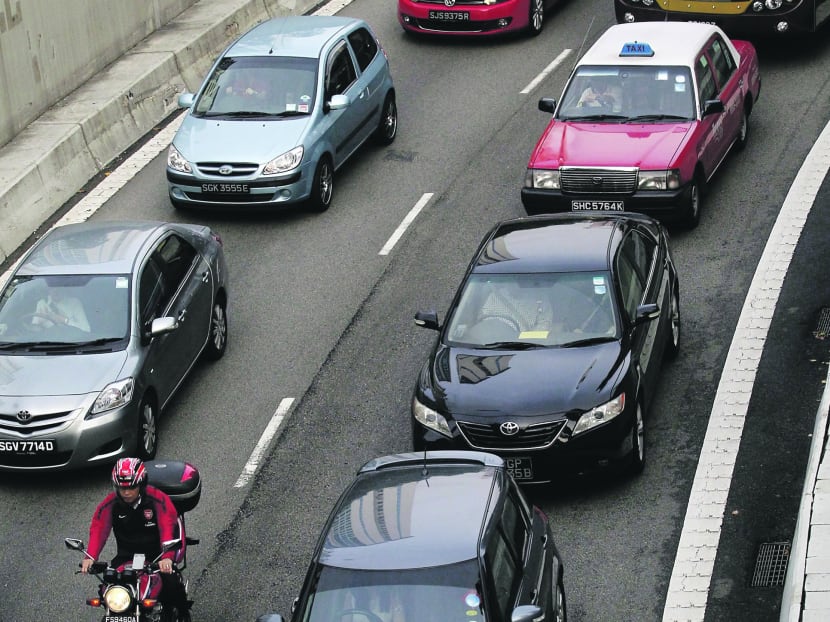Pay-as-you-drive scheme suggested to curb congestion
SINGAPORE — A pay-as-you-drive distance-based system and heftier parking fees were some measures transport academics mooted yesterday as alternative methods to restrain car usage and curb traffic congestion.
SINGAPORE — A pay-as-you-drive distance-based system and heftier parking fees were some measures transport academics mooted yesterday as alternative methods to restrain car usage and curb traffic congestion.
Speaking at a seminar on sustainable urban transport held at the National University of Singapore (NUS), transport economist Anthony Chin noted that the current system of having to fork out large upfront costs — through Certificate of Entitlement (COE) premiums and Additional Registration Fees (ARF) — to buy a car has led to a “sunk-cost effect”, in which car owners choose to drive every day to get their money’s worth. This has led to high vehicle-usage even though Singapore has low car-ownership numbers, added Associate Professor Chin of the Economics Department at the NUS.
Currently, about four in 10 households in Singapore own at least a car, with each vehicle used around 20,000km annually — about twice the mileage when compared to cars in European or Japanese cities.
Dr Paul Barter, an urban transport policy scholar at the Lee Kuan Yew School of Public Policy, proposed a distance-based method in which car buyers pay the cost of COE and ARF for pre-determined distances which they can drive. For example, if a motorist purchases 50,000km worth of taxes under such a system, which will require him to pay additional taxes beyond that mileage, it could prove to be an incentive for motorists to ensure that they use the car only when needed.
Dr Barter added that the fringe costs of car usage, such as parking, should also be re-looked. He said: “Ideally, cars would be cheaper in the future, but more expensive to use and ... to park.”
Pointing to the current system in which developers of commercial buildings are required to build in a minimum area of parking space, Dr Barter argued that the current policy of providing free gross-floor-area (GFA) allowance for parking spaces in buildings is, “in a way, subsidies for Central Business District parking”. This, he felt, goes against charging buyers high ARF for their cars.
Dr Barter said: “I don’t think Singapore should be in the business of subsidising parking at all ... we’ve got our policies going against each other. We need to line them up. My suggestion is, eliminate both the GFA-free allowance and (parking space) requirements and allow developers to choose how much parking space they want to build.”
Besides the two main thrusts of traffic control and improving public transport, Dr Barter also suggested that some emphasis should be placed on creating more “liveable places” for everyone. He said: “We could re-prioritise ... so it’s not just reducing traffic, not just so that the MRT and buses work well, but also creating liveable places, so that Singapore streets can be great places.”
Former Chief Transportation Engineer for the Land Transport Authority Gopinath Menon, who spoke on the role of infrastructure and traffic control, felt that building more roads cannot be a way to eliminate traffic congestion.
Citing the example of North Bridge and South Bridge roads, which he felt had lost its cultural value, Dr Barter called for better urban planning.
“One of the dividends from controlling traffic within limits is that ... they could be much less traffic-dominated. Cars can still get around, you can still go there to park, you can arrive in them, but they should not be highways. They should be places to arrive at, not places to rush through,” he added.







